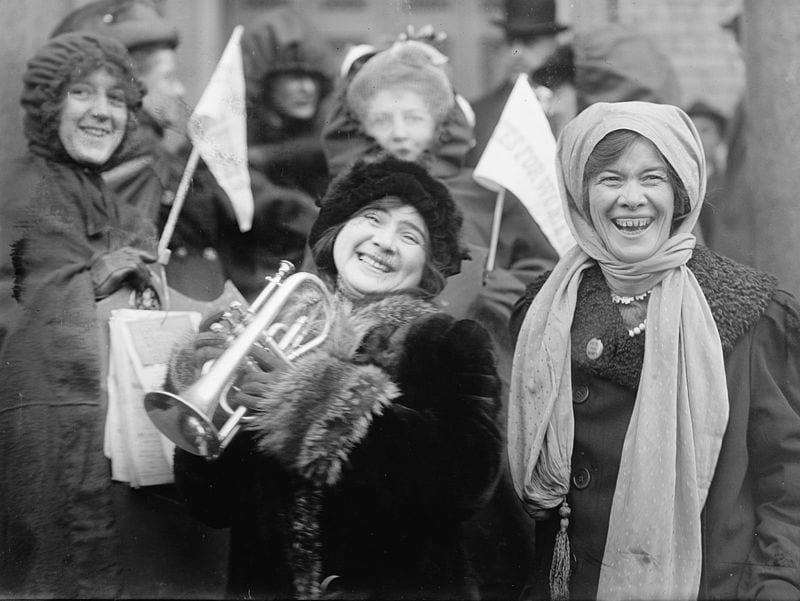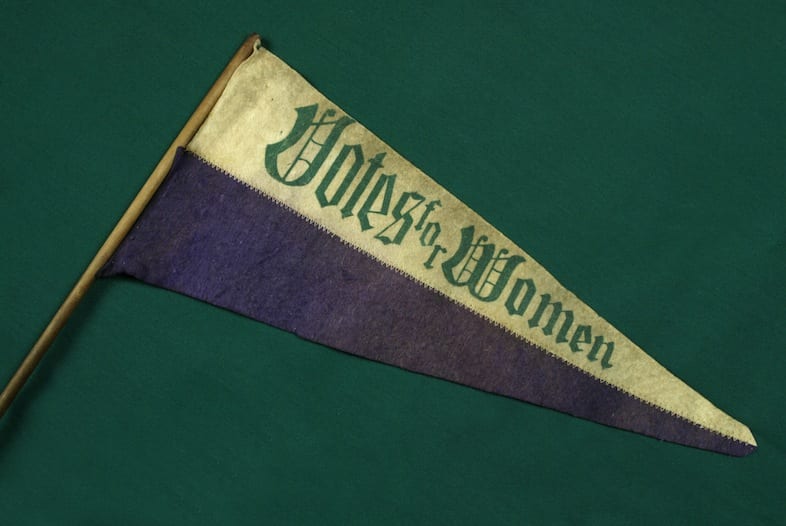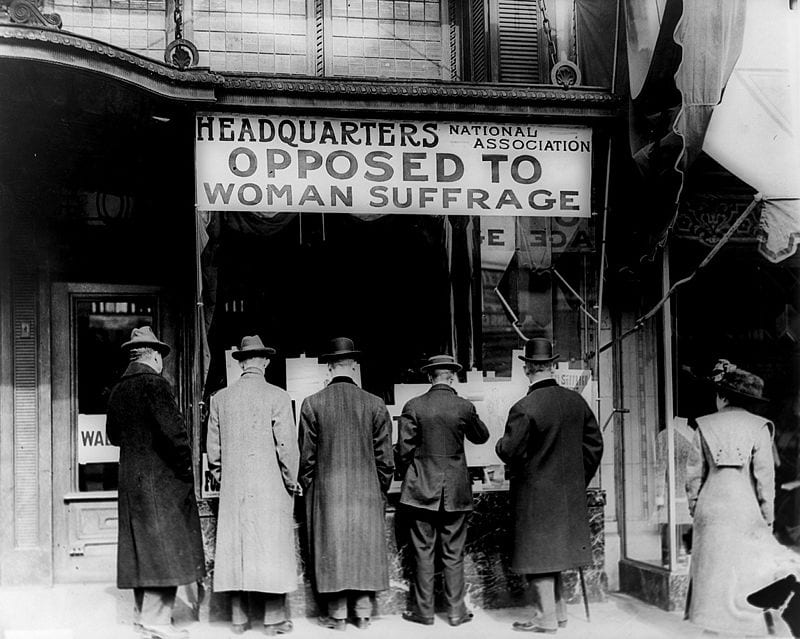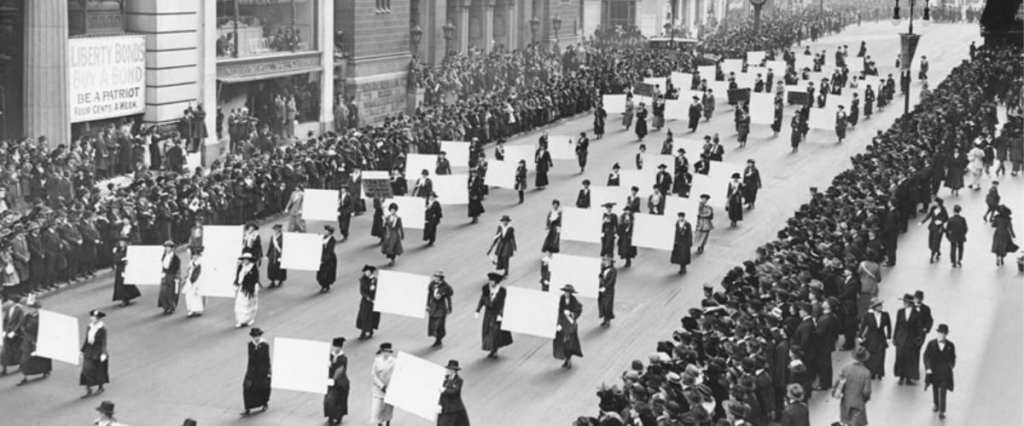Women won the right to vote when the 19th Amendment was finally ratified on August 18th, 1920 (it was passed by congress on June 4th, 1919). We weren’t the last country in the civilized world to encode the right in law, but we were far from the first, and there’s no denying it was an uphill battle from start to finish.
Below are 10 facts you may not know about the history of voting rights in the States, and particularly the fight to get women the vote they deserve.
#10. Suffragettes threw a White House picket party.

Image Credit: Wikipedia
Alice Paul led the charge to get under President Woodrow Wilson’s skin, establishing a group known as the Silent Sentinels. They protested outside the White House in 1917, and over the next 2.5 years they picketed six days a week.
#9. The Wyoming Territory led the national debate.

Image Credit: Wikipedia
Wyoming is known as “The Equality State,” and for good reason – in 1869, Councilman William Bright introduced a bill stating that “every woman…residing in this Territory, may at every election to be holden under the law thereof, cast her vote.”
Women’s rights remained entrenched in the state, so much so that when Congress threatened to deny their statehood application unless they repealed the bill, the legislature refused to back down.
“We will remain out of the union for 100 years rather than come in without the women.”
#8. Hunger strikes forced Wilson’s hand.

Image Credit: Wikipedia
The Silent Sentinels were arrested off and on for “obstructing traffic,” and while Paul was imprisoned, she organized a hunger strike that led to guards force-feeding the activists. They were mistreated, three of them emerging from prison so weak doctors worried they wouldn’t make it, and the ordeal shifted Wilson’s wishy-washy support to advocacy.
#7. It was first proposed in 1878.

Image Credit: Wikipedia
California Senator Arlen A Sargent began a discussion on January 10, 1878, with the words, “The right of citizens to vote shall not be abridged by the United Sates or any State on account of sex,” but the resulting Senate hearings were less than encouraging.
The bill was rejected, and continued to be rejected every year for the next 41 years.
#6. At least one woman lost her life as a direct result of the cause.

Image Credit: Wikipedia
Though she was told to remain on bed rest, Aloysius Larch-Miller publicly debated a prominent anti-suffrage speaker while ill with the flu in 1920. She passed away two days later as Oklahoma struggled with ratifying the amendment.
#5. Before 1920, every state had different voting rights.

Image Credit: Wikipedia
Suffrage laws varied widely, with 15 states allowing women to vote, 21 allowing them to vote depending on the occasion, and 12 barring the right altogether before the federal amendment was passed.
#4. After the ratification of the 19th Amendment, 10 million women were enfranchised.

Image Credit: Wikipedia
The sheer volume of new potential voters made it “the single biggest democratizing event in American history.”
#3. Teddy Roosevelt campaigned on women’s rights.

Image Credit: Wikipedia
Roosevelt made women’s suffrage a central issue when seeking a third term, making history when he invited social reformer Jane Addams to be the first woman to second the nomination of a major presidential candidate.
#2. Mississippi was the last state to ratify the 19th amendment, in 1984.

Image Credit: Wikipedia
Other holdouts were Louisiana and North Carolina, which ratified in 1970 and 1971, respectively.
#1. Not everyone standing in they way was male.

Image Credit: Wikipedia
As remains true today, women can be their own worst enemy. Alice Hay Wadsworth, wife of Senator James Wolcott Wadsworth, Jr. of New York, helped publish a pamphlet that claimed “90 percent of women either do not want it or do not care,” and that the new rights would mean “competition with men instead of cooperation.”
Whatever that means.
The more you know!






